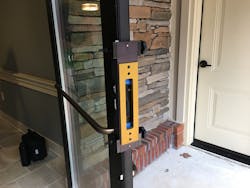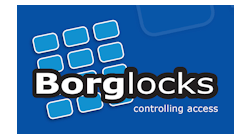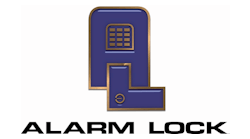Aluminum storefront doors are ubiquitous these days. Originally a staple only in retail settings, aluminum storefront doors now can be found in just about every setting, including commercial, education and healthcare. As a result, aluminum storefront doors, and their associated hardware, are tried-and-true moneymakers for locksmiths.
Whether you perform a fresh installation of a door and frame or simply replace weatherstripping or lubricate a lock, many revenue-generating avenues are associated with aluminum storefront doors. Installing and servicing the locks on these doors are perhaps the easiest of these avenues to get started in or expand upon. No special tools are required beyond what you already use for other locksmithing tasks, and it’s easy to teach yourself how to install and service them.
Here are seven tips and tricks I’ve picked up over the years when working on aluminum storefront doors.
1. Working with Jigs
Multiple manufacturers offer jigs or templates to facilitate storefront door hardware, and these products are, by most accounts, exceptional across the board. Rather than review or evaluate any of these, I’ll cover some of the finer points of their use:
First, invest in a router that has a D-handle. The last thing you want to do is reposition your hands to turn off the router while the bit spins at thousands of revolutions per minute. This puts the door and, most important, you at risk of harm.
Second, go slow and let the tool do the work. Remember the popular adage, “You can always take more material off, but you can’t put it back on.” Multiple passes not only are recommended, but most manufacturers also call for them when you use their jigs or templates.
Third, for inside cutouts, or what you’ll be doing when cutting into doors and frames, make sure you move the router in a clockwise motion. This might sound elementary to many of you, but you’d be surprised by how many people don’t know this.
Finally, invest in a cutting lubricant and overapply it to your bit and the cutting area. This will pay dividends in the final installation outcome and increase the longevity of your tools. If you’re in a pinch, WD-40 will work — but ONLY in a pinch.
2. Avoid the General Public
Speaking of installations, we all are aware of the problems of the general public trying to sneak through the doorway while we’re doing our work. When you’re using a router, this has bad news written all over it. Imagine someone tripping over your extension cord and causing the router to be yanked from your hands. Not good.
Your best bet is to remove the door and perform the installation away from the opening. If this isn’t possible, block off the work area before starting work by positioning caution tape, your tool bag(s), cones, whatever around the area. My buddy Wayne Winton likes this approach, and he doesn’t take it lightly.
If neither option is possible, such as the door being the only exit or entry to the building, then schedule the work outside of business hours. As blunt as this might sound, your health and livelihood supersede all, so protect yourself.
3. Inventory is Key
The great thing about aluminum storefront door locks is that they nearly always fall into just two backsets: thirty-one-thirty-seconds of an inch and 1-1/8 inches. Locks that have a 1-1/2-inch backset exist, but I can count on one hand the number of times I’ve encountered them in the past 15 years. Storefront door locks typically fall into just two finishes: aluminum and duronodic, or oil-rubbed bronze. If we factor in the three most popular formats (latch, hookbolt, deadbolt), that means you have to stock only 12 locks at the bare minimum.
With that said, most manufacturers now offer locks that have two faceplates to cover both finishes. As a result, you can get by with just six total locks (two backsets multiplied by three formats), and they won’t even take up much room in your shop or truck. Get those six and be prepared for 99% of what you’ll encounter.
4. Replacement is OK
While we’re covering inventory, storefront door locks aren’t costly, so don’t be afraid to recommend a replacement instead of trying to service what’s on-site. You aren’t doing your customer(s) any favors by kicking their problem down the road, so to speak. Replacement springs are sold by some manufacturers for their locks, but if the damaged or worn part isn’t one of these springs or some other part that’s sold, just replace the lock.
5. Know the Codes
The storefront door is often the only path of egress for customers while inside. As such, it’s important that you provide hardware that’s right for the application in terms of code compliance and reliability. If you’re new to commercial work, now is a great time to learn all applicable life-safety codes and Americans with Disabilities Act requirements. You don’t want to be held liable due to ignorance of these.
In addition, take the time to read manufacturers’ literature to understand the purpose of their products. For example, hook bolts are designed to repel crowbar attempts to “spread” the door from its jamb or lift it off its track. You wouldn’t want to install a latch lock on a pair of double doors that stay unlocked during business hours and potentially put your customer’s safety at risk. Finally, when servicing or replacing existing hardware, don’t assume that what already was on the door was the right solution. Use your judgment and expertise. Don’t rely solely on whoever specified the previous hardware.
6. Learn Your Exit Devices
Exit devices on aluminum storefront doors are becoming increasingly popular, at least in my part of the world, it seems. Perhaps the most common servicing requirements for these exit devices are stripped or broken dogging assemblies. I’ve yet to encounter an exit device dogging assembly that can’t be replaced in the field in short order. That’s the good news.
The bad news is that, like everything else in this industry, there are dozens of manufacturers and hundreds of models, and they aren’t labeled readily most of the time. Therefore, it’s in your best interest to begin learning and identifying manufacturers and models, so when the time comes to replace a dogging assembly, or service any other part for that matter, you’ll know what you’re working with and where to find parts.
7. Salvage Parts
If you do storefront door work long enough, then you’ll know the importance of salvaging parts when they’re available. Kawneer’s compression screw/springs are a great example of this. These things are a godsend. Other parts include set screws, cylinder collars and cams and various weatherstripping components. I strongly would advise you to put together a kit full of spare parts. It soon will prove to be a lifesaver!
Tyler J. Thomas, CJIL, CMKA, CRL is vice president of Security Engineering Consultants in Atlanta and is the Southeast director for ALOA.





